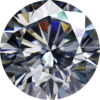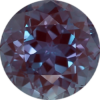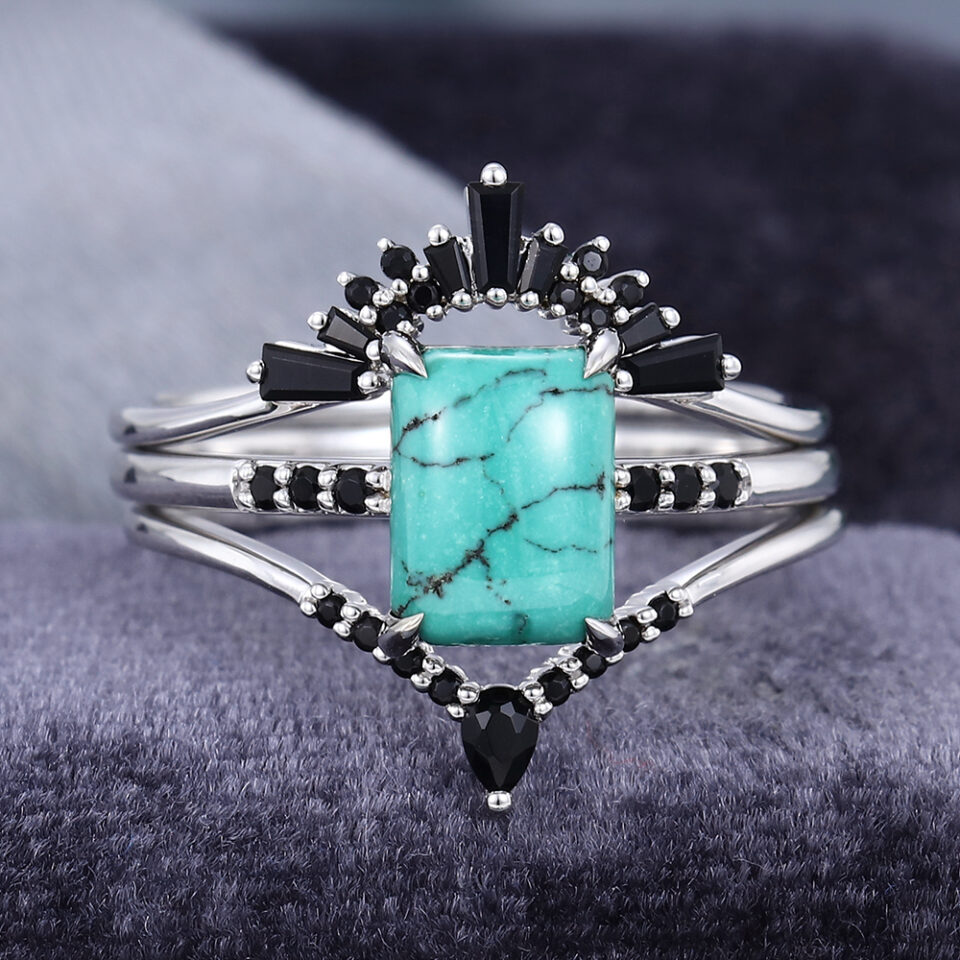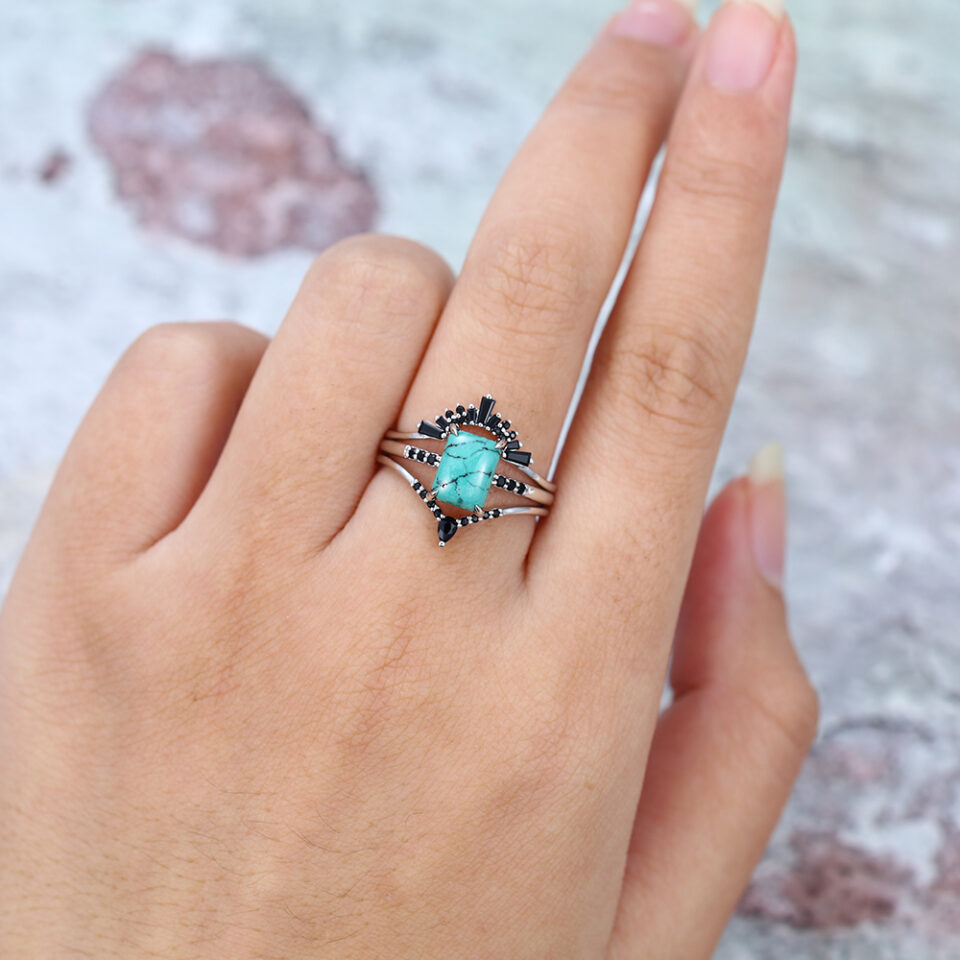CoolringJewelry Turquoise Rings Love is a collection of enchanting turquoise rings designed to captivate your heart. Each piece in this exquisite collection showcases the timeless beauty of turquoise gemstones, celebrated for their vivid blue and green hues. These rings are more than jewelry; they are an expression of love, style, and individuality. Whether you’re drawn to the rustic charm of Southwestern designs or the elegance of modern settings, these turquoise rings offer a diverse range of options to match your unique taste. With each ring, you can wear the allure of turquoise, a gemstone known for its cultural significance and positive energy, as a symbol of love and self-expression.
Turquoise Rings
Showing all 11 results
Turquoise rings are jewelry pieces that feature turquoise gemstones as the central element. Turquoise is a blue to greenish-blue mineral known for its unique and vibrant color, which has been used for ornamental and ceremonial purposes for thousands of years. Turquoise is popular in jewelry, and rings are one of the common forms in which it is used.
Turquoise rings typically consist of the following elements:
Turquoise Gemstone: The focal point of the ring is the turquoise gemstone. This gemstone can come in various shapes and sizes, including oval, round, square, and more. The turquoise is often cut and polished to enhance its beauty and color.
Setting: The setting is the metal framework that holds the turquoise gemstone in place. Common metals used for settings include silver, gold, and platinum. The design of the setting can vary widely, from simple and minimalist to intricate and decorative.
Band: The band of the ring is the part that goes around the finger. It can be made of the same metal as the setting or a different metal. The band may also have additional design elements or gemstones.
Turquoise rings are popular for their striking and eye-catching appearance. They are often associated with Southwestern and Native American jewelry traditions, and turquoise has cultural significance for many indigenous peoples in the Americas. Turquoise is also considered a birthstone for December and is believed to have various metaphysical properties, including bringing good fortune and promoting positive energy.
Gemstone rings come in a wide variety of options, each with its unique beauty and properties. Common types of gemstones used in gemstone rings include:
- Diamond:
Renowned for its brilliance and durability, diamonds are a classic choice for engagement and wedding rings.
Available in various colors, blue sapphires are especially popular, but sapphires also come in shades like pink, yellow, and green.
Known for its deep red color, rubies are both vibrant and symbolize love and passion.
- Emerald:
With its rich green hue, emeralds are a symbol of rebirth and love, often used in elegant rings.
This purple variety of quartz is known for its calming and spiritual qualities.
- Aquamarine:
With its light blue color, aquamarine symbolizes tranquility and is often used in vintage-style rings.
Opals are prized for their unique play of colors, making each opal ring one of a kind.
This pale pink to peach-pink gemstone is becoming more popular in engagement rings.
This unique gemstone can change color from green in daylight to red under incandescent light.
A striking blue or greenish-blue stone often used in bohemian or southwestern-style rings.
Known for its adularescence, moonstone has a mystical, almost ethereal quality.
Agate is a variety of chalcedony with distinctive banding patterns and comes in a wide range of colors, making it a popular choice for both its aesthetic appeal and its metaphysical properties.
These are just a few of the many gemstone options available for rings. The choice of gemstone often depends on personal preferences, style, and the significance or symbolism associated with the stone.
Turquoise Rings FAQ:
Wearing a turquoise ring can be a stylish and meaningful addition to your overall look. Here’s a simple guide on how to wear one:
Choose the Occasion: Turquoise rings are versatile and can be worn for various occasions. Opt for a smaller, more understated design for everyday wear, and consider larger or more ornate rings for special events.
Complementary Colors: Turquoise pairs beautifully with earthy tones, such as browns, beiges, and greens. It can also stand out against white or black clothing. Use your outfit as a canvas to make the turquoise pop.
Balance with Other Jewelry: If you’re wearing other jewelry, keep it balanced. If your ring is sizable and eye-catching, go for more subtle earrings and necklaces.
Finger Choice: Turquoise rings can be worn on any finger, but they are often seen on the middle or index fingers. Consider your comfort and the overall balance of your hand.
Remember that personal style and comfort should guide how you wear your turquoise ring. It’s a beautiful piece of jewelry that can express your unique taste and personality.
The value of a turquoise ring depends on several key factors. First and foremost, the quality of the turquoise gemstone is crucial. High-quality turquoise with intense, evenly distributed color and minimal matrix patterns is more valuable. The origin of the turquoise matters, with certain mines like the Sleeping Beauty mine in Arizona or Persian turquoise mines commanding higher prices due to their rarity and superior quality.
The size and weight of the turquoise gemstone also affect the value, with larger stones generally being more valuable. The setting and craftsmanship of the ring, often made of metals like gold or platinum, can enhance its overall worth. Additionally, the age, rarity, and cultural significance of the ring play a role. The condition of both the stone and the setting is significant, and market demand can influence the price. Thus, turquoise rings can range from relatively modest in value to quite substantial, making professional appraisal a wise step when assessing their worth.
Creating a turquoise inlay ring involves a process that combines the beauty of turquoise with the craftsmanship of jewelry-making. Here’s a simplified guide:
Materials and Tools: Gather the essentials – a metal ring blank (usually silver), turquoise stones, epoxy resin, a jeweler’s saw, files, and sandpaper.
Design: Plan your inlay design. Decide on the arrangement and pattern of the turquoise stones within the ring.
Cutting Turquoise: Using a jeweler’s saw, cut the turquoise stones to fit the design. Ensure they match the shape and size needed for the inlay.
Preparing the Ring: Carve out a groove or channel in the metal ring blank where the turquoise will be set. Use files and sandpaper to refine the groove.
Inlay: Mix epoxy resin according to the manufacturer’s instructions and apply it into the groove. Carefully place the cut turquoise pieces into the resin.
Curing: Allow the epoxy to cure fully, following the recommended drying time.
Finishing: Once cured, sand the turquoise flush with the ring’s surface, and polish the ring to a smooth finish.
This process combines precision, patience, and creativity to craft a stunning turquoise inlay ring.
Authenticating a real turquoise ring involves careful examination. Here’s a simplified guide to determine its authenticity:
Color and Consistency: Genuine turquoise displays a consistent color, typically a vivid blue to greenish-blue. Be cautious if the color appears too uniform, as this can be a sign of dyed stones.
Matrix Patterns: Look for natural matrix patterns, the veiny or web-like marks in the stone. Authentic turquoise often has these, while fake stones may lack them or feature artificial patterns.
Hardness: Turquoise is a relatively soft gemstone (5-6 on the Mohs scale). If a ring easily scratches or chips, it might not be real turquoise.
Temperature: Real turquoise feels cool to the touch. Synthetic materials or imitations may feel warmer.
Weight and Density: Genuine turquoise is denser than most imitations. Hold the ring and gauge its weight; it should feel substantial.
Professional Appraisal: When in doubt, seek a professional jeweler or gemologist to authenticate the ring using specialized equipment and expertise.
Keep in mind that some sellers may misrepresent or unknowingly sell imitation turquoise. Therefore, it’s essential to purchase from reputable sources.
The choice of which finger to wear a turquoise ring is a matter of personal preference and cultural significance. Here’s a simple guide:
Ring Finger: In some Western cultures, people wear rings on the fourth finger of the left hand, known as the “ring finger.” This is a common choice for engagement and wedding rings. However, turquoise rings can be worn on this finger for aesthetic purposes as well.
Index Finger: The index finger, or the second finger from the thumb, is a popular choice for wearing statement rings like turquoise. It allows the ring to stand out and draw attention to your hand.
Middle Finger: The middle finger, the third finger from the thumb, is another good option for wearing a turquoise ring. It provides a balanced and stylish look.
Other Fingers: You can also wear a turquoise ring on the pinky finger or any finger you feel comfortable with. Ultimately, the choice depends on your style and comfort.
Cultural and personal meanings may also influence your decision. In some traditions, wearing a ring on a specific finger may carry symbolic significance, but this can vary widely.
Cleaning a turquoise and silver ring is relatively simple. Here’s a straightforward guide to keep your jewelry looking its best:
Gather Supplies: You’ll need a soft, lint-free cloth, mild soap (like dish soap), a soft-bristle brush (a toothbrush works well), and warm water.
Preparation: Fill a small bowl with warm water and add a few drops of mild soap. Gently mix to create a soapy solution.
Cleaning the Silver: Dip the toothbrush or a soft cloth into the soapy water and gently scrub the silver parts of the ring. Be cautious not to scratch the turquoise.
Cleaning the Turquoise: To clean the turquoise, simply dip a clean cloth in the soapy water and wipe the surface. Do not soak the turquoise, as it is porous and can absorb water, potentially changing its color or causing damage.
Rinse and Dry: Rinse the ring with clean, warm water to remove any soap residue. Pat it dry with a soft, dry cloth.
Storage: Store your clean ring in a dry place, away from direct sunlight or extreme temperatures.
Avoid harsh chemicals, ultrasonic cleaners, and abrasive materials that can damage the turquoise or silver. With regular, gentle cleaning, your turquoise and silver ring can maintain its beauty and luster.
Turquoise on a mood ring typically represents a calm and relaxed mood. Mood rings contain a thermochromic element that changes color based on the wearer’s body temperature, which is believed to reflect their emotional state. When the ring turns turquoise or greenish-blue, it suggests a tranquil and serene mood. This color is often associated with feelings of inner peace, contentment, and relaxation.
However, it’s important to note that mood rings’ interpretations are more symbolic than scientifically precise. The color change depends on factors beyond just mood, such as temperature and individual variations.
In essence, when a mood ring turns turquoise, it’s often seen as an indication of a positive and composed emotional state. Still, for accurate mood tracking or emotional insight, it’s best to rely on self-awareness and communication rather than a mood ring.




































